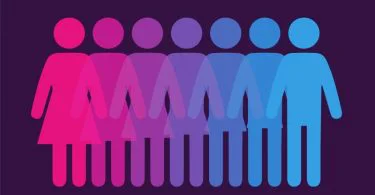The term “regime” refers to the way a country is run, including its rules, norms, and institutions. Regimes are often long-lasting and stable, even when the leader changes. It includes the political and philosophical ideas that guide the way the country is run. On the other hand, administration is the job of a specific group of people, led by the head of state or government, who are in charge of putting policies into action and running the day-to-day business of the state. The main difference is that a regime is the larger system of government, while an administration is the group of people in charge of putting that system into action and running it during a specific time period.
What is Regime?
A regime is a way of running a country or organisation. It includes the political, social, and economic institutions, rules, and principles that determine how it works. It shows the political ideas, policies, and norms that are most popular and gives a framework for how power is used, and decisions are made. Regimes are often stable and consistent, even when the people in charge or the people running the government change.
Regimes can be put into different groups based on how power is shared, the political ideology behind them, and how many people they include. Some regimes are democratic, authoritarian, and even totalitarian. Democratic regimes focus on political freedom, representative institutions, and the rule of law. On the other hand, authoritarian and totalitarian regimes concentrate power in a few’s hands, often stifling dissent and limiting civil liberties.
Regimes can also change when there is a peaceful transition, a revolution, or external force steps in. A regime change happens when there is a major change in how the government works, leading to a new set of institutions, rules, and values that govern how power is used.
What is Administration?
An administration is the group of people, led by the head of state or government, who are in charge of running the day-to-day business of a country or organisation and putting its policies into action. The administration is part of a larger system of government and works to carry out the rules and principles set up by that system.
Administrations can differ in how they are set up and what they do depending on the political situation and the organisation they work for. In a democratic system, an administration usually comprises elected officials, appointed advisors, and civil servants who work together to carry out laws, run public services and enforce laws. In authoritarian systems, the administration is often more centralised and power is held by a few people.
When new leaders are elected or appointed or political priorities and policies change, administrations can change. Administrations aren’t like regimes, which are stable and stay the same over time. Instead, they are short-term and change over time as the people in charge change.
Difference Between Regime and Administration
The scope and stability of an administration are what sets it apart from a regime. In political science, the term “regime” refers to an overarching system of governance that persists even after changes in the top leadership. It lays out the fundamental principles around which a nation or group operates politically and ideologically. On the other hand, the administration is the term used to describe the specific group of people responsible for carrying out policies and managing the day-to-day operations of a state under the direction of the head of state or government. Administrations are less permanent than regimes since they function within the framework of the regime and undergo leadership transitions. Underneath, we will focus on the most salient differences between administration and regime:
Governing System vs Implementing Group
A regime is the overall system of governance comprising the rules, laws, and other governing structures in place. In contrast, an administration is the group of people inside a regime tasked with carrying out the government’s policies and running the state’s day-to-day operations.
Stability and Continuity
Regimes tend to be stable and consistent even after new leaders take office. Yet, administrations are only transitory, and they change on a regular basis as new leaders are elected or appointed and as societal and political goals shift.
Scope
While administrations are responsible for day-to-day operations, policy execution and management are under the purview of a country’s regime.
Ideology and Institutions
Political ideologies and the institutions that support them characterise regimes, while administrations focus on implementing plans and programmes.
Change and Transition
When the system of government is radically altered, resulting in new institutions, norms, and values, this is known as a “regime change.” More frequent changes in administration occur as new leaders take office and old ones leave, but this only sometimes results in a change in the government structure.







